Narkgrowop
Active Member
Hey guys, so I did a flush last Friday (using fox farm soil and they recommend a flush after week 4) and both of my plants are looking awful. One of the plants has had issues since week 2 and I haven't been able to sort it out. The leaves have been turning brown, drying up, and falling off. My other plant looked amazing until the day after my flush. The lower leaves are all turning yellow, and a bunch of leaves are showing brown spots. Any help is greatly appreciated.
What Strain is it? Northern Lights Auto
Is it Indica, Sativa or Hybrid? What percentages? Indica dominant, 80%/20%
How Many Plants? 2
Is it in Vegetative or Flowering Stage? Flowering
If in Flowering Stage... How Long? Week 1 for smaller plant, week 2 for larger
Indoor or Outdoor? Indoor
Soil or Hydro? Fox Farm Soil
If Soil... What is in your Mix? 70% fox farm soil, 30% perlite
If Soil... What Size Pot? 3 gallon pots
Size (Wattage) of Light? How Many? ONe 600w LED
Is it Air Cooled? Yes
Temperature of Room/Cabinet? Temps range from low 70s to upper 80s
RH of Room/Cabinet? 25%
PH of Medium or Reservoir? Watering PH: 6.7. Runoff PH: around 5.9
Any Pests? No
How Often are you Watering? Every 2-3 days
Type and Strength of Fertilizers used? Using big bloom and tiger bloom at 5ml/gallon
Size or Square Footage of Room? Homemade tent. 20"x30"x 60"
Smaller plant:
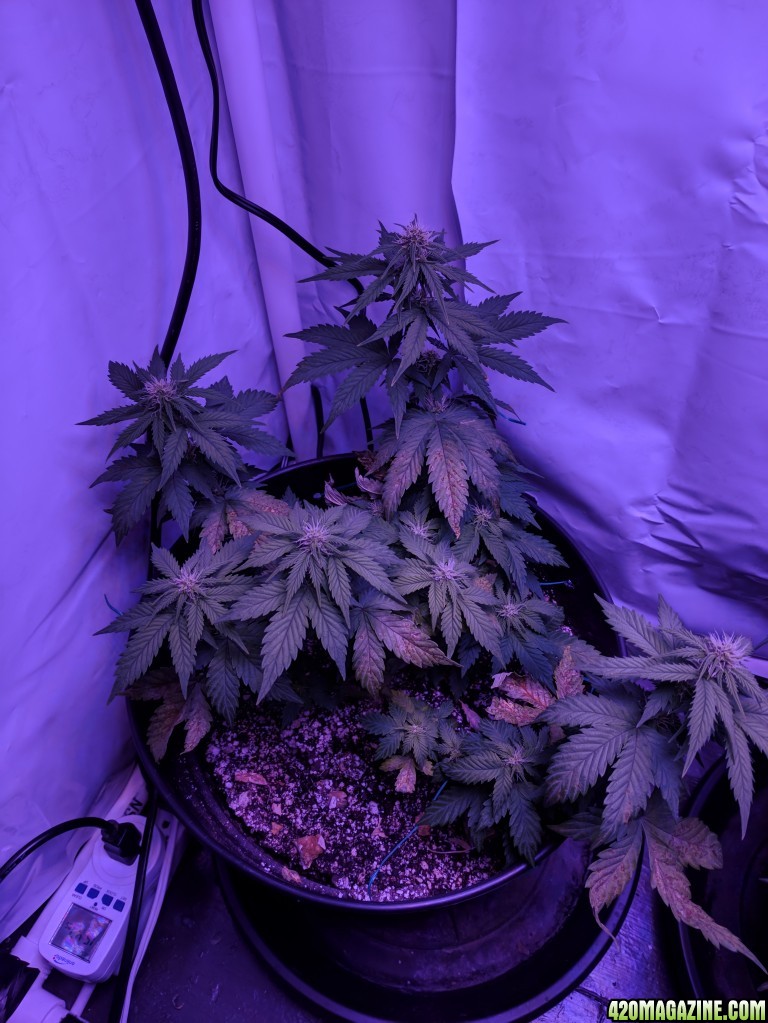
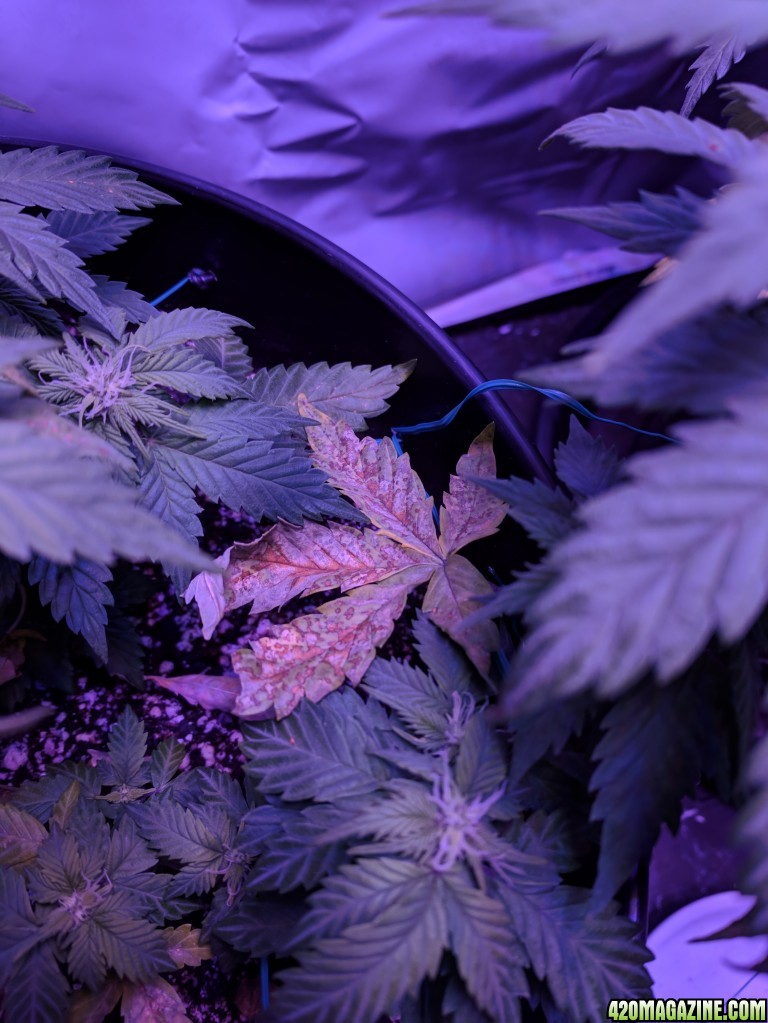
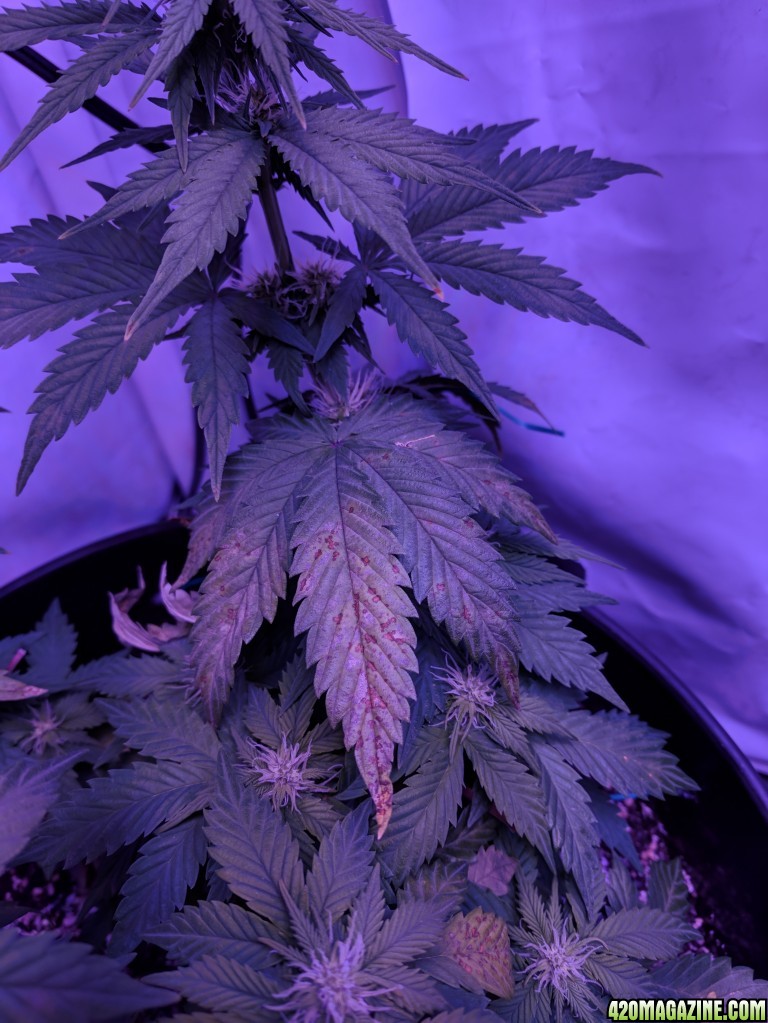
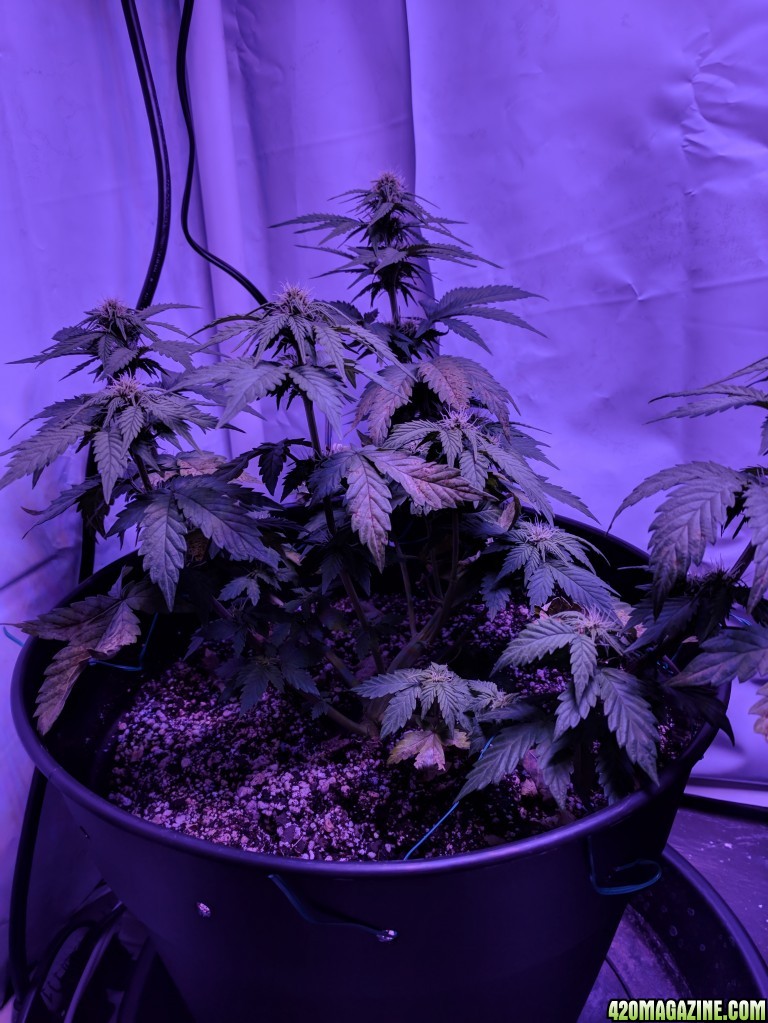
Larger plant:
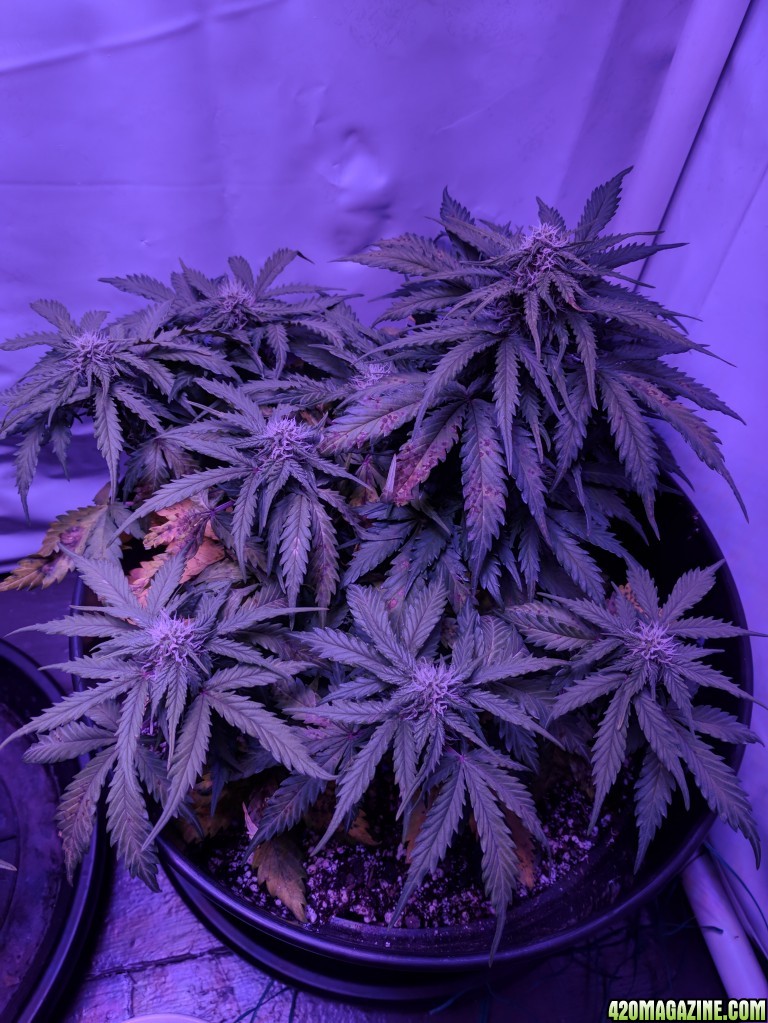
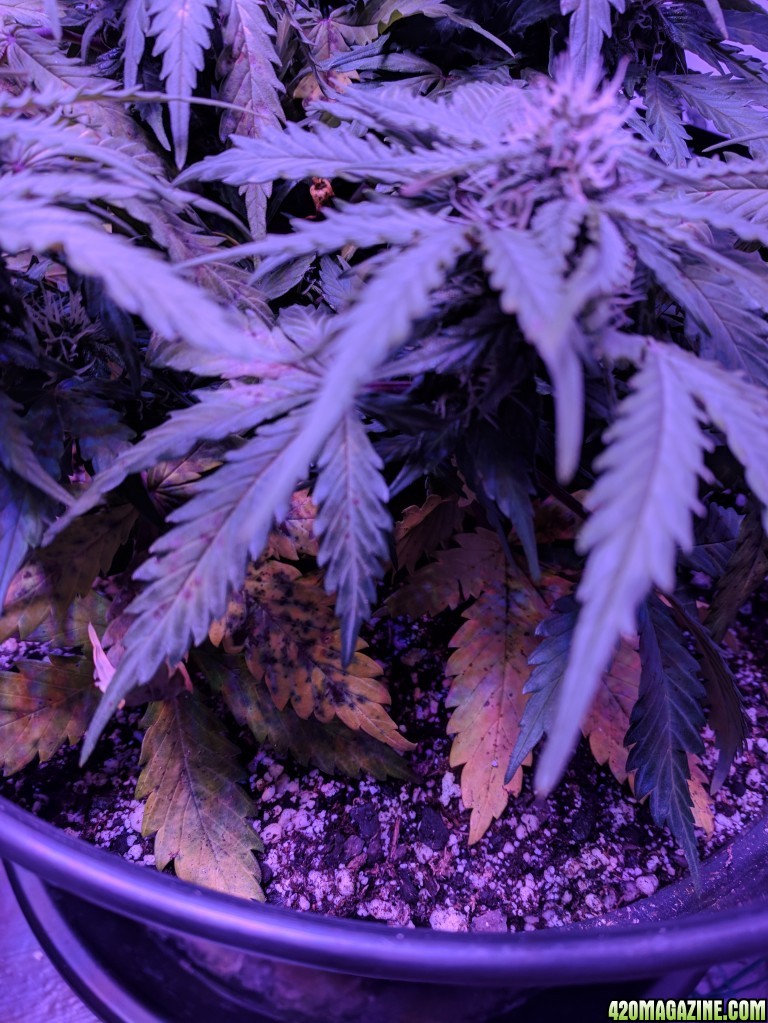
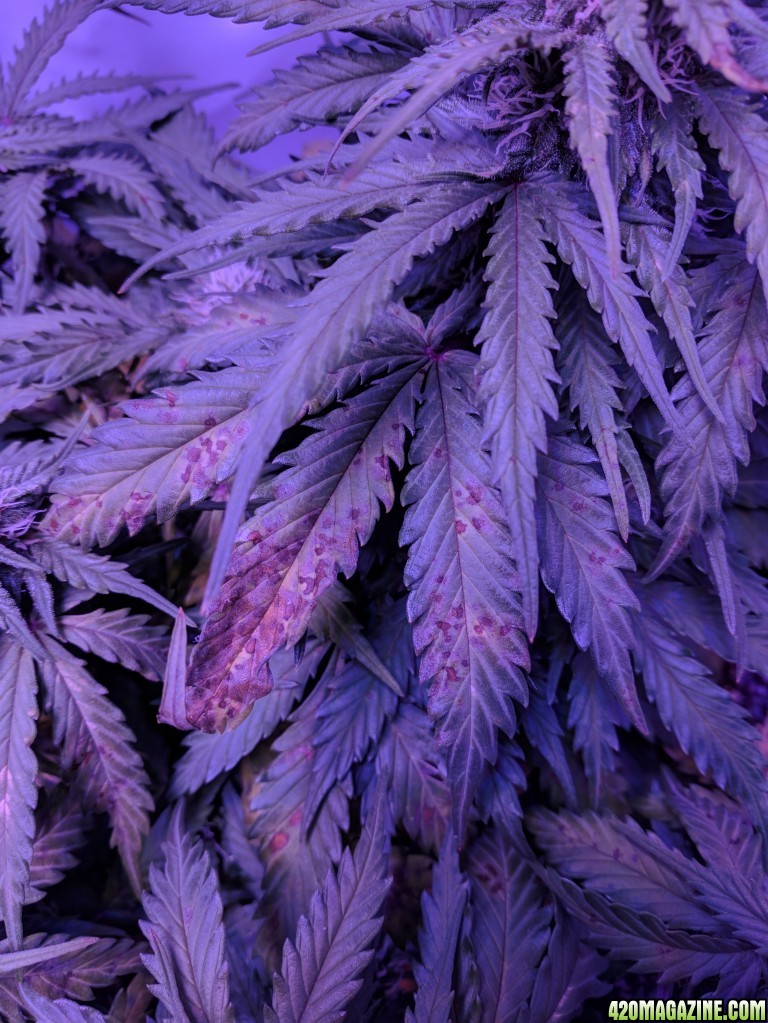
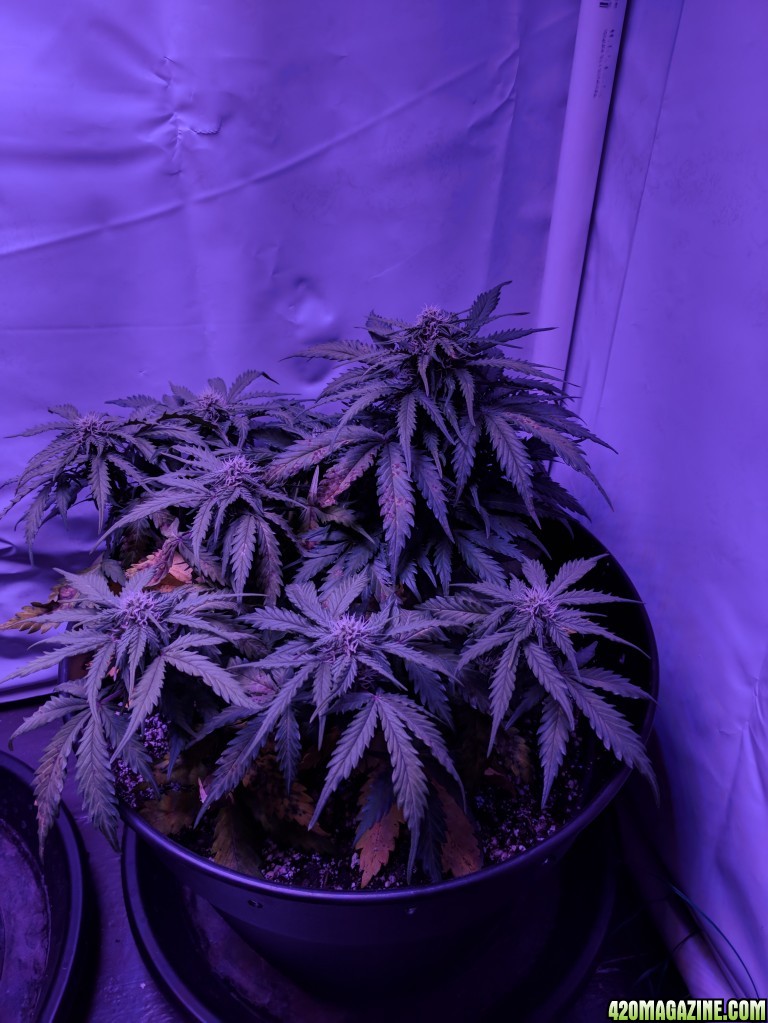
What Strain is it? Northern Lights Auto
Is it Indica, Sativa or Hybrid? What percentages? Indica dominant, 80%/20%
How Many Plants? 2
Is it in Vegetative or Flowering Stage? Flowering
If in Flowering Stage... How Long? Week 1 for smaller plant, week 2 for larger
Indoor or Outdoor? Indoor
Soil or Hydro? Fox Farm Soil
If Soil... What is in your Mix? 70% fox farm soil, 30% perlite
If Soil... What Size Pot? 3 gallon pots
Size (Wattage) of Light? How Many? ONe 600w LED
Is it Air Cooled? Yes
Temperature of Room/Cabinet? Temps range from low 70s to upper 80s
RH of Room/Cabinet? 25%
PH of Medium or Reservoir? Watering PH: 6.7. Runoff PH: around 5.9
Any Pests? No
How Often are you Watering? Every 2-3 days
Type and Strength of Fertilizers used? Using big bloom and tiger bloom at 5ml/gallon
Size or Square Footage of Room? Homemade tent. 20"x30"x 60"
Smaller plant:




Larger plant:






